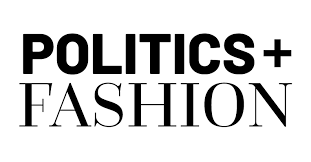Politics and Fashion: The Interplay of Style and Society 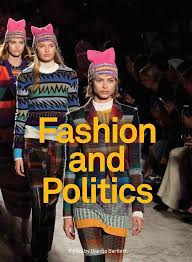
Fashion and politics have long been intertwined, each influencing the other in profound and often unexpected ways. From the clothing choices of world leaders to the sartorial statements made by activists, fashion serves as a powerful tool for political expression and social commentary. This exploration delves into the historical context, notable examples, and contemporary trends that illustrate the complex relationship between politics and fashion.
Historical Context
The Role of Clothing in Social Hierarchies
Throughout history, clothing has been a significant indicator of social status, power, and political allegiance. In ancient civilizations, such as Egypt and Rome, attire was closely linked to class and rank. Pharaohs adorned themselves with luxurious fabrics and gold, while Roman senators wore togas to signify their status. This use of fashion to signify power established early on the notion that what one wears can communicate political identity.
The French Revolution: Fashion as Rebellion
The French Revolution (1789-1799) marked a pivotal moment in the relationship between politics and fashion. The revolutionary ideals of liberty, equality, and fraternity were reflected in the clothing of the time. The extravagant fashion of the aristocracy became a target for criticism, leading to a rejection of lavish garments in favor of simpler, more practical attire. The sans-culottes, for example, donned working-class clothing—such as trousers instead of knee breeches—as a symbol of their revolutionary spirit. This shift illustrated how fashion could embody political ideologies and movements.
Fashion as Political Statement
The Suffragette Movement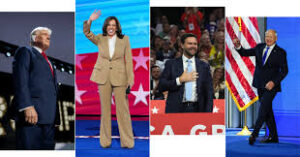
The early 20th century saw significant political movements, with women’s suffrage emerging as a key issue in many countries. Suffragettes used fashion as a means of protest and visibility. They adopted white, purple, and green as their colors, with the garments they wore often featuring these hues as symbols of their cause. The act of wearing these colors in public spaces was a bold statement against the patriarchal society that restricted women’s rights.
Civil Rights Movement
The Civil Rights Movement in the United States during the 1950s and 1960s also highlighted the interplay between fashion and politics. Activists employed clothing as a means of asserting identity and dignity. For example, the “Black is Beautiful” movement encouraged African Americans to embrace their natural hairstyles and traditional attire, rejecting Eurocentric beauty standards. The fashion choices of figures like Angela Davis—who often wore afros and stylish, bold outfits—became emblematic of the struggle for civil rights and self-affirmation.
Fashion in the Political Arena
Political Leaders and Their Styles
Fashion plays a significant role in how political leaders are perceived. A leader’s clothing choices can communicate authority, approachability, and values. For instance, former U.S. President Barack Obama often wore tailored suits that projected professionalism and competence. In contrast, his successor, Donald Trump, favored a more flamboyant style, characterized by bold ties and a less conventional fit, which appealed to a segment of the electorate seeking a break from political norms.
First Ladies and Fashion Influence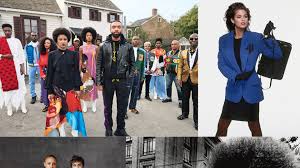
The fashion choices of First Ladies in the United States also reflect the interplay of politics and fashion. Michelle Obama, for example, used her platform to promote American designers and advocate for healthy living through her “Let’s Move!” campaign. Her style evolved into a symbol of modernity and empowerment, as she often wore designs that resonated with the American public while also paying homage to her African American heritage.
In contrast, Melania Trump’s fashion choices sparked discussions about elitism and privilege, particularly her decision to wear a “I Really Don’t Care, Do U?” jacket while visiting a migrant detention center. This moment highlighted how fashion can evoke powerful emotional responses and serve as a flashpoint for political discourse.
Fashion as Protest
The Pink Pussyhat
In recent years, fashion has become a tool for protest, particularly in response to political events and policies. The Pink Pussyhat, created for the Women’s March in January 2017, became a global symbol of resistance against misogyny and oppression. Thousands of participants donned the hats, which were knitted in bright pink, to demonstrate solidarity and challenge the newly elected administration’s policies on women’s rights.
Black Lives Matter and Streetwear
The Black Lives Matter movement has also embraced fashion as a medium for political expression. Streetwear brands have collaborated with activists to create apparel that promotes social justice messages. The use of slogans and imagery on clothing serves to raise awareness and generate discussions about systemic racism and police violence. This trend highlights how fashion can mobilize communities and galvanize support for important social issues.
The Influence of Social Media
Digital Activism
The rise of social media has transformed how fashion and politics interact. Platforms like Instagram and Twitter provide spaces for activists to share their messages, mobilize support, and showcase their styles. Influencers and public figures use their platforms to raise awareness about political issues while promoting fashion brands that align with their values.
Virality of Fashion Statements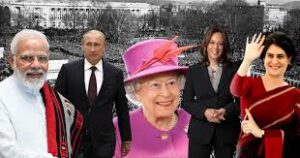
Fashion moments can quickly go viral, amplifying their political messages. The impact of fashion on social media was evident during the Met Gala, where attendees often use the event to make bold political statements through their outfits. For example, in 2019, actress Billy Porter wore a striking outfit that challenged traditional gender norms, highlighting the ongoing discussions around gender identity and representation.
Contemporary Trends and Future Directions
Sustainability and Ethical Fashion
As awareness of environmental issues grows, the fashion industry is increasingly being scrutinized for its impact on the planet. Many brands are adopting sustainable practices, and consumers are becoming more conscious of their purchasing choices. Fashion activism is emerging as a response, with designers creating collections that prioritize ethical production methods and materials. This trend reflects a growing demand for transparency and responsibility in fashion.
Gender Fluidity in Fashion
The push for inclusivity is shaping the future of fashion. Designers are increasingly blurring the lines between traditional gendered clothing, offering gender-fluid collections that challenge societal norms. This movement not only reflects changing attitudes toward gender identity but also has political implications, as it advocates for the acceptance and recognition of diverse identities within society.
Conclusion
The relationship between politics and fashion is complex and multifaceted, serving as a lens through which we can examine social values, power dynamics, and cultural shifts. Fashion acts as a mirror reflecting societal changes and as a tool for political expression, enabling individuals and movements to communicate their ideals and resist oppression.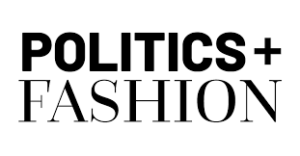
From the suffragettes to contemporary movements like Black Lives Matter, the history of fashion is interwoven with political activism, showcasing how clothing can embody resistance, solidarity, and identity. As we move forward, the fusion of fashion and politics will continue to evolve, shaping not only how we dress but also how we engage with the world around us. The future of fashion will likely remain a vibrant arena for political dialogue, innovation, and change, highlighting the enduring power of style in the quest for social justice and equality.

